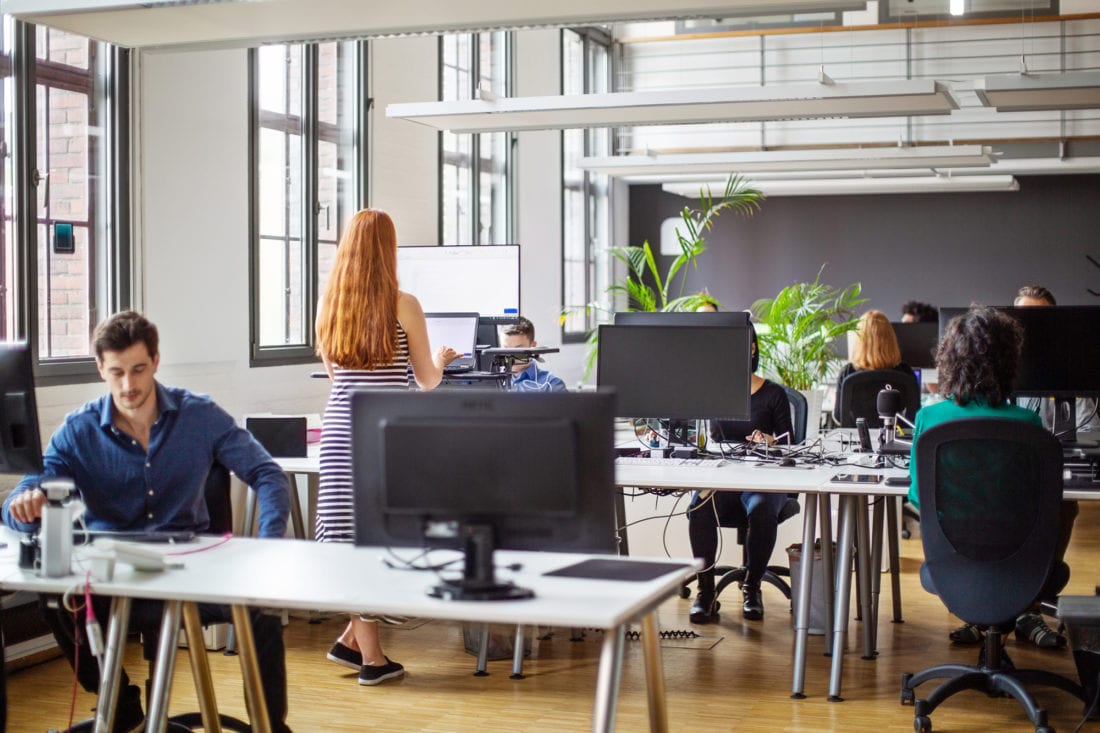
Sit-stand desks, “collaboration lounges” sprinkled among cubicles, “focus rooms” for privacy, and windows with views of nature are all among today’s cool office trends.
But here’s the rub. As amazing as modern offices appear to be, they may not be helping employees do their jobs. They may even be distracting them from getting work done.

That’s the premise of a provocative new book co-authored by Berkeley-Haas Senior Lecturer Cristina Banks. In Built to Thrive: How to Build the Best Workplaces for Health, Well-Being, & Productivity, Banks and her collaborators combine research insights and workplace experiences to argue that too much attention is paid to physical space at the expense of the psychological and social needs of today’s employees.
Case in point: sit-stand desks. While they’re meant to get workers up on their feet for health reasons, studies show the novelty quickly wears off and employees mostly sit. “Collaboration” lounges rarely get used because they’re too close to cubicles. “Focus” rooms are rarely soundproof, meaning conversations intended to be private aren’t. And what about those outside views of trees and grass? The only beneficiaries are people who work on the office periphery.
Though well-intentioned, piecemeal features like these don’t go nearly far enough to promote employee health and well-being. “They miss a fundamental understanding of what leads to employee productivity and that is a multi-pronged approach,” says Banks, who teaches management and also serves as director of the UC Berkeley Interdisciplinary Center for Healthy Workplaces (ICHW), which published the book. Berkeley Haas also sponsors the Center.
“Built to Thrive” relies on empirical research findings and professional advice to make the case for why a holistic understanding of the physical, emotional and social needs of employees is crucial in today’s workplace. The book’s 10 authors, each of whom contribute a chapter, are experts from a number of fields including environmental psychology, real estate, architecture, public health, and design strategy.
The authors argue that to inspire motivation and a sense of well-being businesses should pay attention to autonomy, social connection, bodily security, and work with purpose. Physical spaces, they argue, either enhance or detract from those goals.
For example, environmental psychologist Sally Augustin writes about the important roles that mood and emotion play in the workplace. Extroverts, for example, are happy to sit on a sofa with coworkers and collaborate, while introverts prefer to sit behind a desk or table. Cognitive thinking improves under blue lighting, while warmer hues encourage more socialization. Even scents serve a purpose: the smell of lemon improves performance, while cinnamon inspires creativity.
In separate chapters, Gervais Tompkin, a principal with the global design firm Gensler, describes the power of experience in the workplace, including the use of sound and projections of nature on screens or augmented reality glasses. Kevin Kelly, a senior architect with the General Services Administration, explains why employees’ subjective opinions of their workspace matter more than objective reality. And Google executive Anthony Ravitz details how the company relies on employee surveys and other data sources to measure office quality.
The book ends with a general framework to guide businesses on their existing and future office design projects. The approach emphasizes user needs while also recognizing that all departments need to be integrated into the process. It also points out that creating an optimal workspace doesn’t have to be costly and can actually be fun.
“There’s this myth that designing wellness into the workplace is more expensive than not doing it,” says Banks. “This book shows why that’s not the case, and why office design needs to be among the top three concerns for any business leader.”